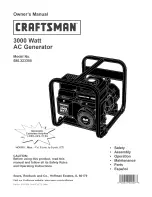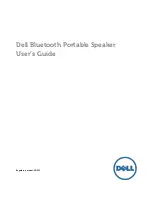
9
OPM-155/A
and is available electronically through our website or
by requesting a copy from the factory. The unit should
be mounted to allow ample working room around it. A
general rule to follow is to allow 24 inches or more of
clearance for maintenance. Follow local codes for clearance
from combustible surfaces.
INSTALLING THE FUEL LINE
WARNING: FIRE DANGER
Connecting rigid fuel line (i.e. steel or copper line)
directly to the inlet fuel filter or fuel pump may cause
the fuel line to crack during operation creating a
serious fire hazard.
The fuel supply should be as close to the engine as
possible. This will reduce the installation cost of fuel runs
and minimize line losses. The diesel fuel supply should be
no more than 3 feet below the fuel inlet on the pump. If
your fuel supply is lower than three feet you may have to
install an additional lift pump to bring the fuel up to the
mechanical fuel pump on the engine.
The information in this manual is offered to assist you in
providing the proper fuel for your engine. However, this
information is only provided to inform you of the engine’s
requirements and assist in making you aware of the
decisions you must make. In no case should the instructions
or information provided be interpreted to conflict with any
local, state, or national codes. If in doubt, always consult
your local fire marshal or fuel supplier.
Engine generator sets are properly adjusted before they
leave the factory. Connecting a fuel supply with adequate
supply volume is critical to reliable operation. Diesel units
with optional base mounted fuel tanks are pre-plumbed to
the mechanical fuel pump on the engine.
Open skid mounted Diesel units are often supplied with
capped inlet and return lines. The use of a sustainable
customer supplied flexible fuel line is essential between
the engine and fuel supply to provide a vibration break
between your fuel supply and the engine.
LUBRICATION
Before starting the engine, check the oil level in the
crankcase. If it is low, refill to the full mark with the proper
weight/grade of oil as recommended by the engine
manufacturer’s maintenance instructions. The necessity of
using the correct oil, and keeping the crankcase full, cannot
be over emphasized. Failure to use the proper oil and keep
the crankcase properly filled will cause excessive engine
wear and shorten its useful life.
Winco recommends our 5W-40 fully synthetic heavy duty
engine oil to give you maximum cold weather protection
while maintaining excellent performance in warmer
weather. We have partnered with a national lubrication oil
manufacturer to give you access to Winco private branded
premium oil available at comparable prices to conventional
oils. See your dealer for additional information.
INSTALLING THE BATTERY
CAUTION
In the following battery installation procedure, check
to be sure the DSE 7310 MKII is in the “stop” position.
This should be your last step before initial start-up.
This unit require 4D batteries, this unit is a 24 volt system
and requires 2 batteries. The batteries should be rated at
a minimum of 1100 CCA. Installation of the highest CCA
rated battery, within the correct BCI group, will increase
cold weather starting performance. Gel batteries should not
be used with the battery tender installed in the generator
enclosure.
Installation and servicing of batteries must only be
preformed or supervised by personnel knowledgeable of
batteries and the required precautions. Keep unauthorized
personnel away from batteries.
When installing or replacing batteries, use the proper
group/size starting battery. The battery should be a
maintenance-free lead acid design. Deep cycle batteries will
not work for this application.
CAUTION: PERSONAL DANGER
NEVER dispose a battery in a fire. The battery is
capable of exploding.
DO NOT open or mutilate the battery. Released
electrolyte is known to be harmful to the skin and eyes
and to be very toxic.
These engine-generator sets are all NEGATIVE ground. Be
very careful not to connect the battery in reverse polarity,
as this may short circuit the battery charging system on the
engine.
CAUTION
A battery presents a risk of electrical shock and high
short circuit current. The following precautions must
be observed when working with batteries:
1. Remove watches, rings, and other metal objects.
2. Use tools with insulated handles.
3. Check both the battery cable ends and the battery
posts to be sure they are free of corrosion.
4. Always connect the battery positive cable first
and then connect the battery negative cable.
When
removing the battery cables from the battery,
reverse the procedure, disconnect the negative
first
and then the positive cable.
5. Be sure all connections are tight and coat the










































